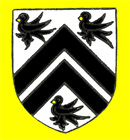The Manor of Everton
Volume II of the Victoria County History for Bedfordshire was published in 1908 and has accounts of every manor in Everton. The Manor of Everton itself seems to have had its genesis in the seven-hide manor of Countess Judith’s, recorded in the Huntingdonshire section of Domesday Book, the five-hide manor of the countess’ perhaps being part of the Manor of Potton.
The overlords of the Manor of Everton were the Earls of Pembroke by 1140 and, after them, the Dukes of Norfolk. The last mention of the overlordship is in 1626 when it was held by Sir Thomas Puckeringe.
The tenant in the 13th century was Roger Burnard. By 1307 the manor was in the hands of Walter Langton, Bishop of Coventry and Lichfield from 1296 until his death in 1321. He was also Lord Chancellor and Treasurer. He obtained grant of a market and fair for Everton. On Langton’s death in 1322 the manor included a mansion house and garden and 275 acres of arable. The manor then passed to Langton’s nephew Edmund Peverel.
Peverel’s daughter married William de la Pole who held the manor in 1354. Their granddaughter Joan, Baroness Cobham in her own right married, as her second husband, Sir Reginald Braybroke and had the manor in 1403, holding it until her death in 1433. Her daughter Joan married Sir Thomas Brooke and her granddaughter married Robert Tanfield, who held the manor in 1503.

The Tanfield coat of arms
The Tanfield family had the manor until 1615 when William Tanfield conveyed it to Sir Humphrey Winch, a justice of King’s Bench. The manor remained with the Winch family until it was alienated to Philip Story in 1659. The last reference to the manor is in 1693 when Story still held it. The Inclosure Act for Everton of 1807 makes no mention of the manor which had, by then, presumably ceased to exist.